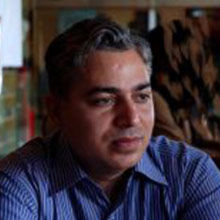Although textile materials can be singed in yarn, knitted or woven forms,singeing of woven fabrics is much more common as compared to other forms. Twomain methods of singeing are direct flame singeing and indirect flame singeing.The important direct flame singeing parameters are:
- Singeing position
- Flame intensity
- Fabric speed
- Distance between the fabric and the burner
- Moisture in the fabric coming for singeing
Table 1 Common Problems in Singeing and TheirCountermeasures
| Problems | Causes | Countermeasures |
| Incomplete singeing | 1. Too low flame intensity 2. Too fast fabric speed 3. Too far distance between the fabric and the burner 4. Inappropriate singeing position [not severe enough] 5. Too much moisture in the fabric incoming for singeing | 1. Optimum flame intensity 2. Optimum fabric speed 3. Optimum distance between the fabric and the burner 4. Optimum singeing position
incoming for singeing |
| Uneven singeing [widthways] | 1. Non-uniform moisture content across the fabric width 2. Non-uniform flame intensity across the fabric width 3. Uneven distance between the burner and the fabric | 1. Uniform moisture content across the fabric width 2. Uniform flame intensity across the fabric width 3. Uniform distance between the fabric and the burner |
| Uneven singeing [lengthways] | 1. Non-uniform moisture content along the fabric length 2. Non-uniform flame intensity along the fabric length 3. Change in fabric speed during Singeing 4. Change in the distance between the fabric and the burner along the length | 1. Uniform moisture content along the fabric length 2. Uniform flame intensity along the fabric length 3. Uniform fabric speed during Singeing 4. Uniform distance between the fabric and the burner along the length |
| Thermal damage or Reduction in tear strength | 1. Too high flame intensity 2. Too slow fabric speed 3. Too close distance between the fabric and the burner 4. Inappropriate singeing position [too severe] | 1. Optimum flame intensity 2. Optimum fabric speed 3. Optimum distance between the fabric and the burner 4. Optimum singeing position |
To read more articles on
To promote your company, product and services via promotional article, followthis link:










Comments